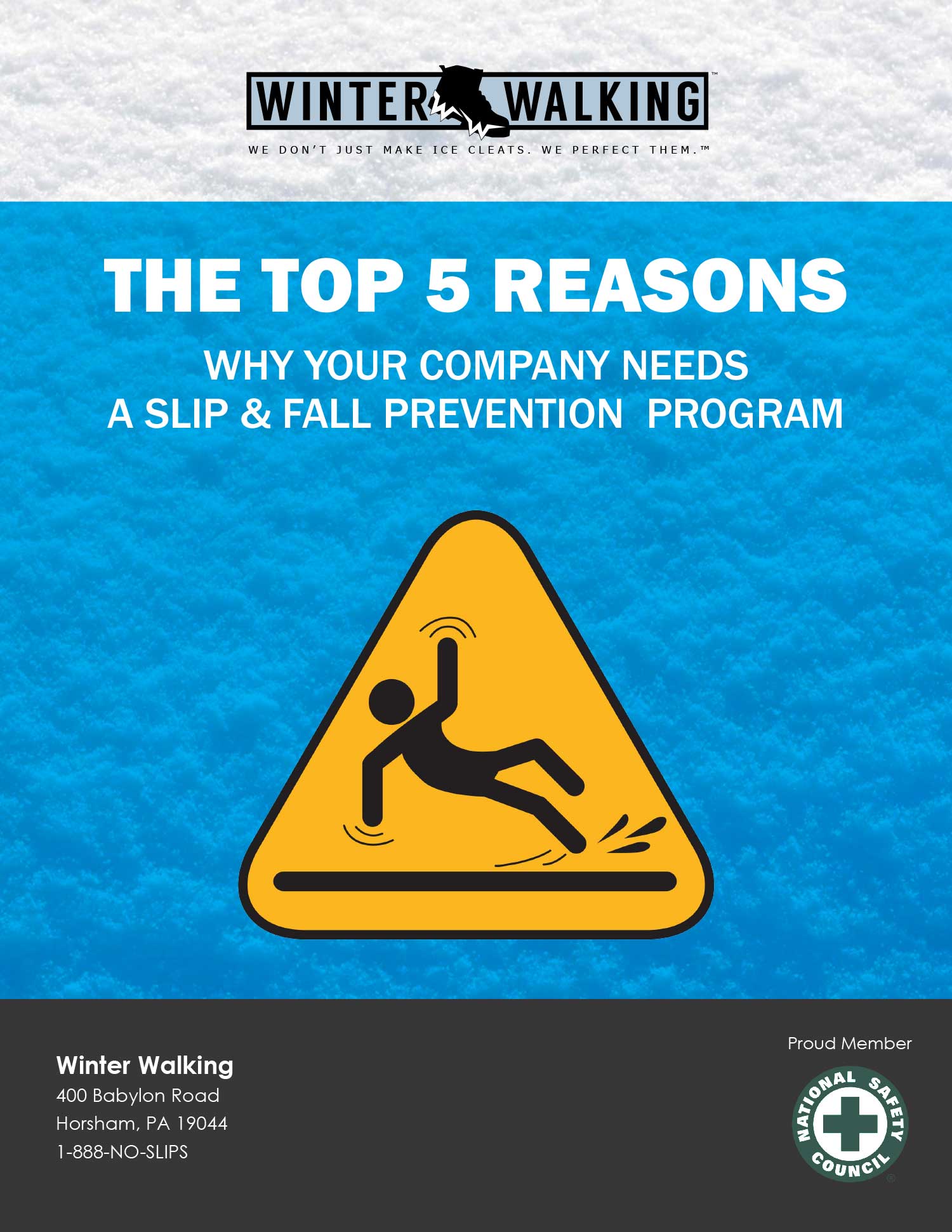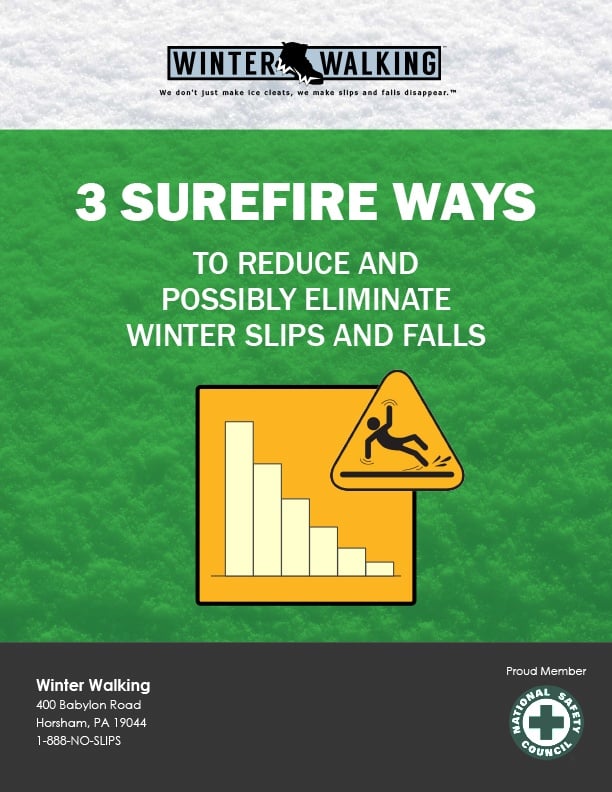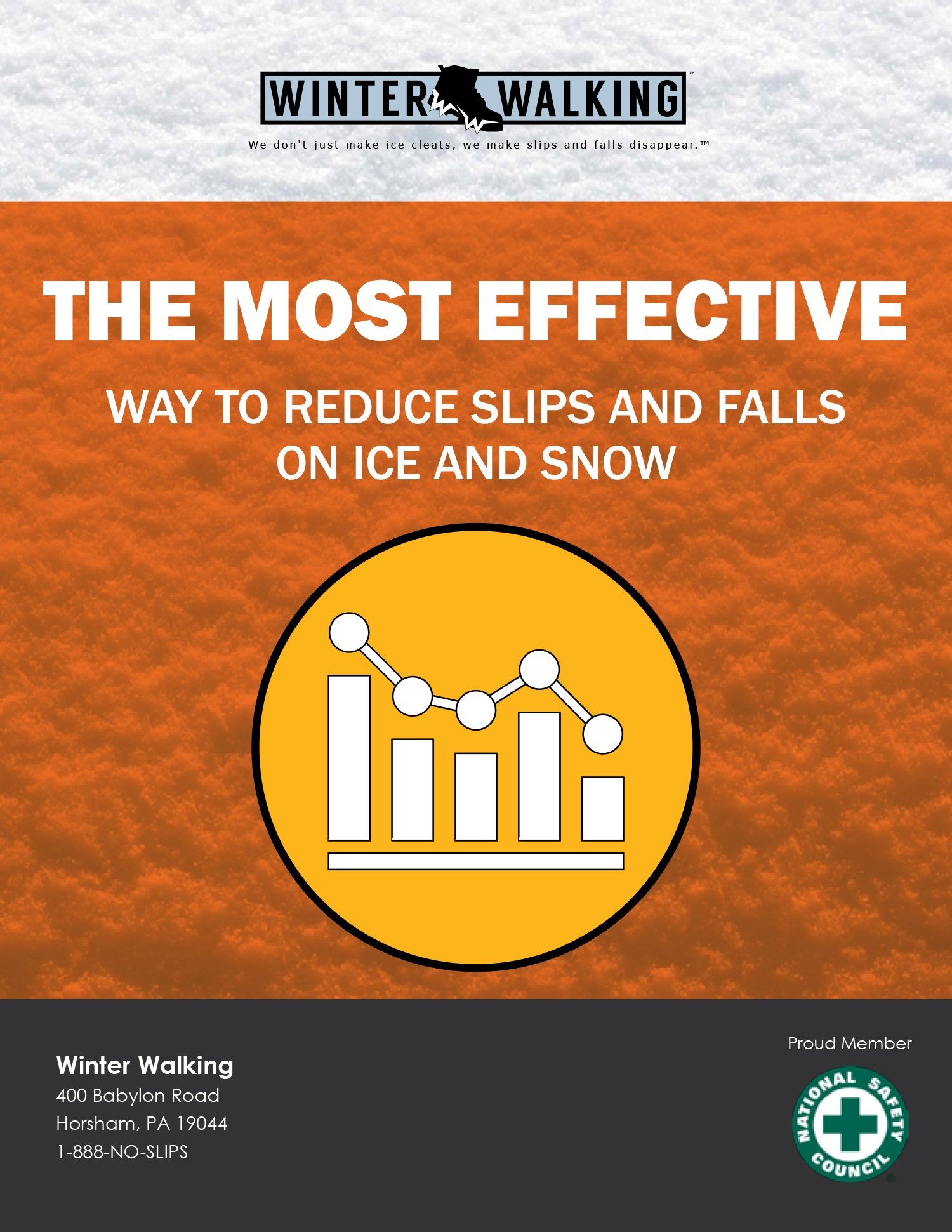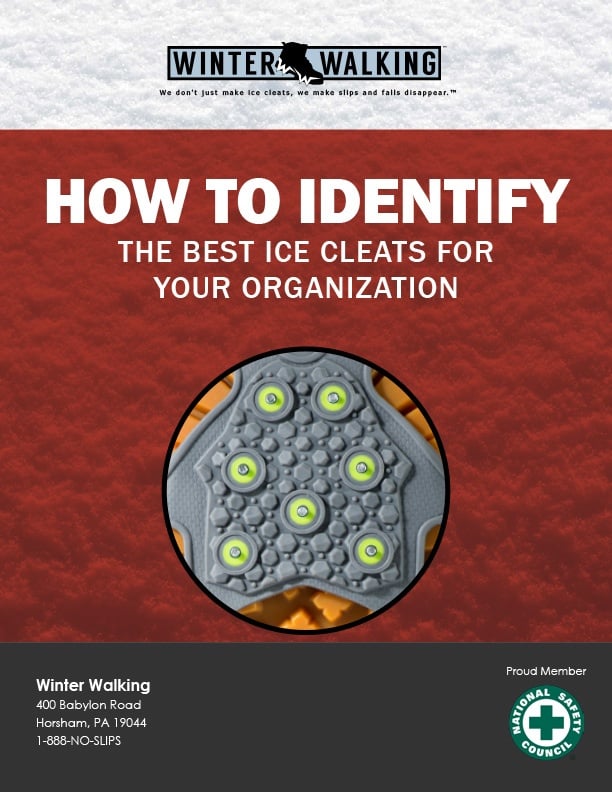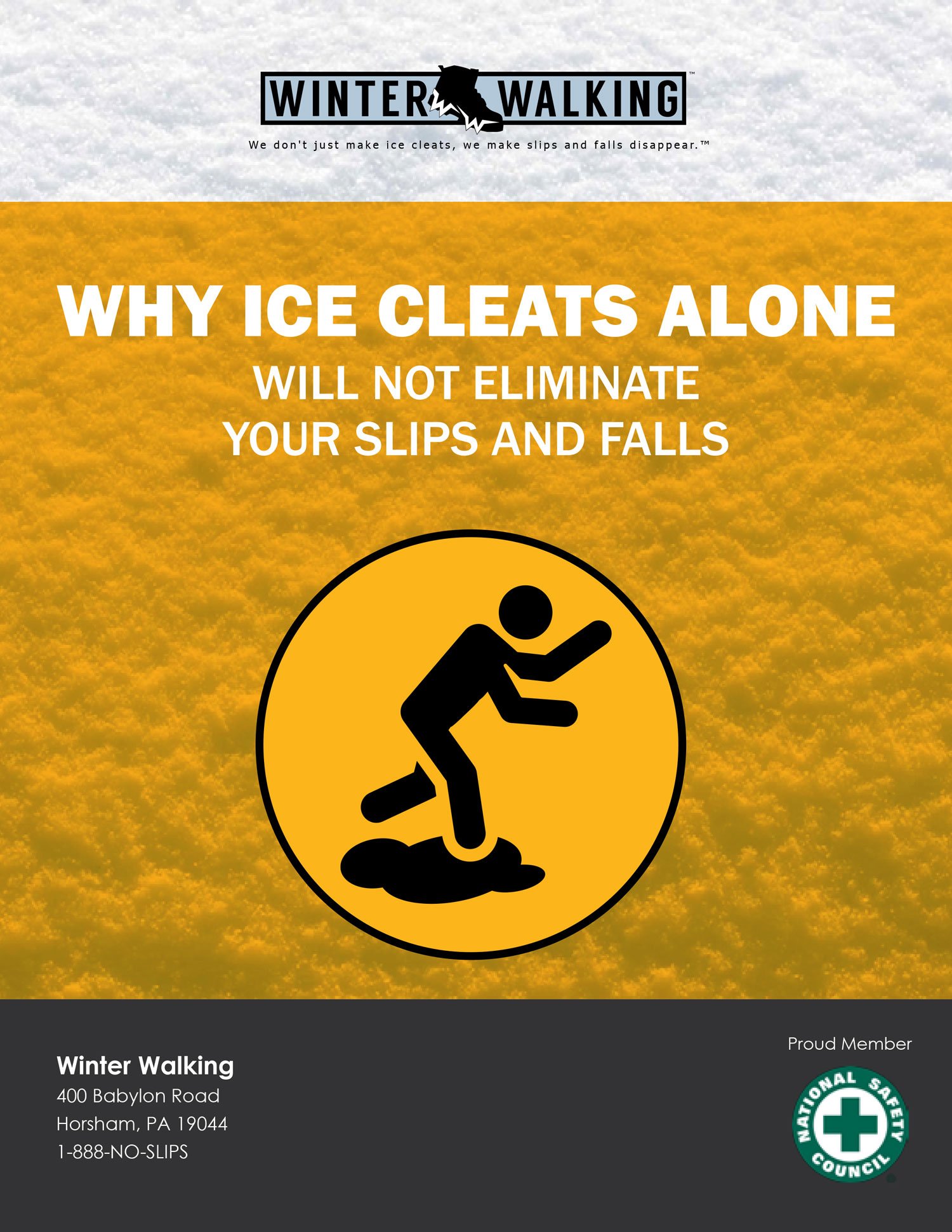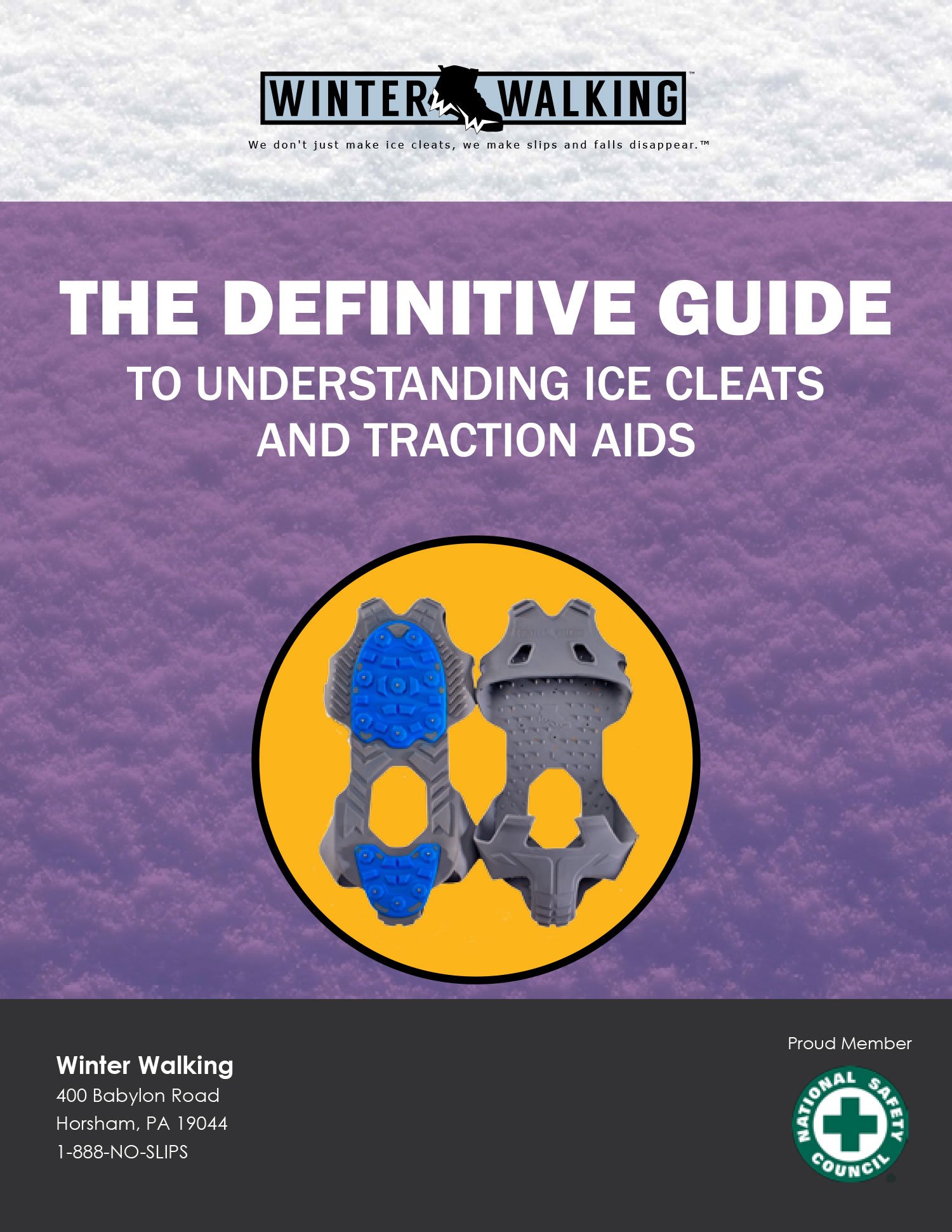Falls are the world’s leading cause of injuries, sending hundreds of thousands of people to the hospital each year alone.
Of those cases, only a fraction happen at work, and an even smaller number involve ice/snow-related slip and falls. But if you’re an employer whose workers spend a lot of time outdoors, even one of these incidents is too many.
Fortunately, keeping your workers safe during winter is easier than you might think. In this blog post, we’ll look at ways you can prevent slip and falls and other wintertime injuries.
Eliminate The Act of Walking on Compromised Surfaces
Think about all of the slip and fall accidents and slip hazard jobs that happened in your organization last winter while working outdoors and indoors. If you can eliminate walking in those areas, all of those accidents go away, right? And while this is easier said than done, it’s not impossible. Accomplishing this in one or two areas will make a dramatic difference in reducing your accident rate. I’ve seen industries, such as utilities, take a job function like meter reading and eliminate the need to walk to the meters by converting to remote electronic reading. This is a perfect example of eliminating exposure to the compromised surface.
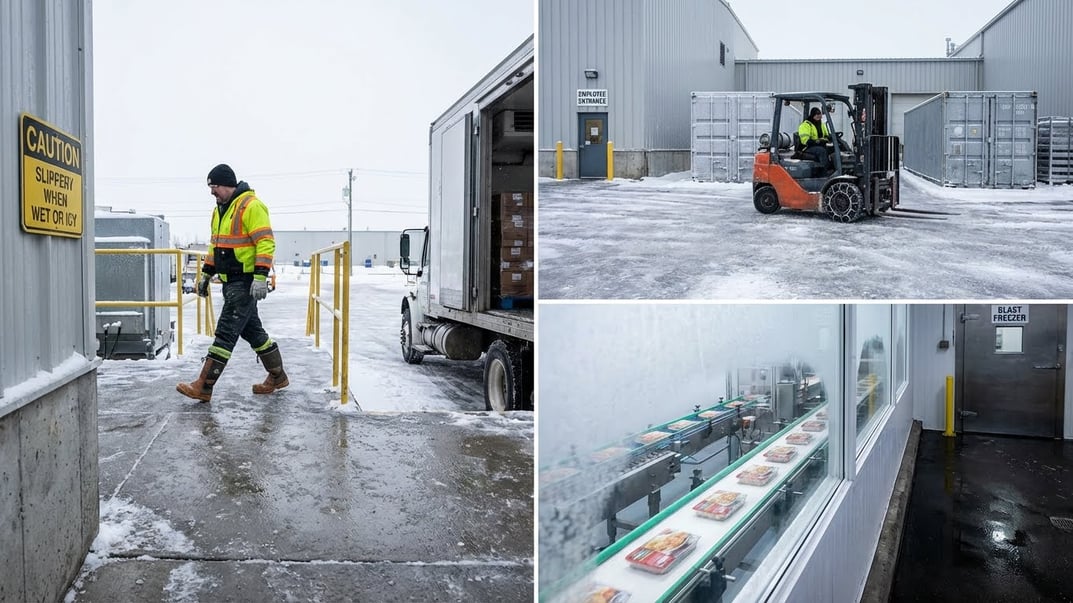
Ice and Snow Removal
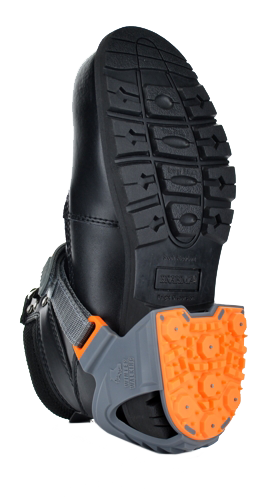
It’s important to make an effort to prevent ice build-up on walkways, stairways, parking areas and outdoor break areas.
Beyond that, you should:
- Remove hazards, like spilled water, or snow that’s collected on sidewalks -- right away.
- Make sure you look where you’re walking, keeping your hands ready to steady yourself. With that in mind, try to avoid carrying heavy objects which could affect your balance.
- Use signs, cones, barricades and floor stands to mark hazardous areas and warn pedestrians.
- Use footwear that provides proper traction (more on that later). Failing that, walk on grassy areas when your walkways are slippery. Wear brightly colored clothes to make yourself visible to drivers
Cleaning and treating walking surfaces with things like salt and sand are a good way to reduce instances of winter slip and fall accidents. However, this method of protection only extends to your own property. You can’t control what happens on other properties and on public roads, which can become a problem if you have employees who have to, for example, make deliveries or pick-ups in winter time.
This is where proper footwear and traction come into play. We’ll explore this topic more in the next section.
Proper Traction
While it’s always a good idea to follow standard snow and ice removal procedures, one of the surest ways to prevent winter slip and fall accidents is by giving your workers a firmer ground under their feet, literally.
Traction elements, like ice cleats, ice spikes and abrasive, sandpaper-like grit, can increase the traction with every step your employees take this winter.
We’re talking specifically about a type of traction aid that your workers can wear outdoors without having to take them off when they head back inside or if they need to drive somewhere.
There’s a name for these products: the Transitional Traction LOW-PRO® Ice Cleat, and they are cleats your employees can put on at the beginning of a shift and keep them on until they clock out. This means no more lost time from having workers take these cleats on and off.
You won’t risk damage to your floors. And most importantly, you won’t create a slipping hazard for your workers.
These cleats are compact, light-weight, industrial strength, and easy-to-use devices for walking over snow and ice, designed to fit over all types of boots or shoes in a way that is virtually impossible to notice after you’ve put them on.
Your workers will gain traction as they walk with the help of 26 minimally-exposed tungsten carbide studs that allow them to grip the ground in slippery winter conditions, while still being able to navigate clean surfaces with reduced risk of damaging your floors.
This makes them generally safer to wear indoors and when driving, saving your employees from having to give up valuable time removing the cleats and putting them on again.
These indoor ice cleats feature:
- A patent-pending dual-elastic design and dual rear pull-tabs for easy on/off
- An aggressively treaded sole for added traction in thicker snow
- Sizes ranging from S to XXL to fit every one of your workers
With a pair of ice cleats that can be worn throughout the day, indoors and out, your workers will be safer and your life less complicated. Contact us today to find out more about the LOW-PRO and all the ice cleat varieties we carry.
Thank you for reading. If you found value in this post please click “SHARE” to make your LinkedIn network aware or simply “LIKE” it.
Jonathan Bell is President and CEO of Winter Walking. He has been helping organizations across a wide variety of business sectors prevent workplace slips and falls in ice and snow for over 20 years. Winter Walking currently helps some of the world’s largest organizations keep their employees both safer and more productive while working outdoors in the winter season. Contact jonathan@winterwalking.com or visit www.winterwalking.com.

